Search Result
Results for "
food preservative
" in MedChemExpress (MCE) Product Catalog:
10
Biochemical Assay Reagents
17
Isotope-Labeled Compounds
| Cat. No. |
Product Name |
Target |
Research Areas |
Chemical Structure |
-
- HY-N0626
-
-
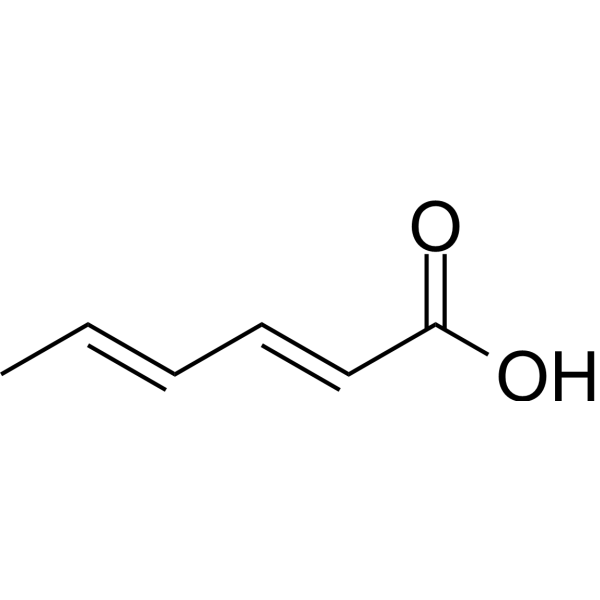
-
- HY-133651
-
|
|
Fungal
|
Infection
|
|
2,2-Dibromopropanoic acid is a dibromo product based on propionic acid. Propionic acid is a short chain fatty acid and acts as chemical intermediate. Propionic acid is also a mold inhibitor and widely used in food preservative .
|
-
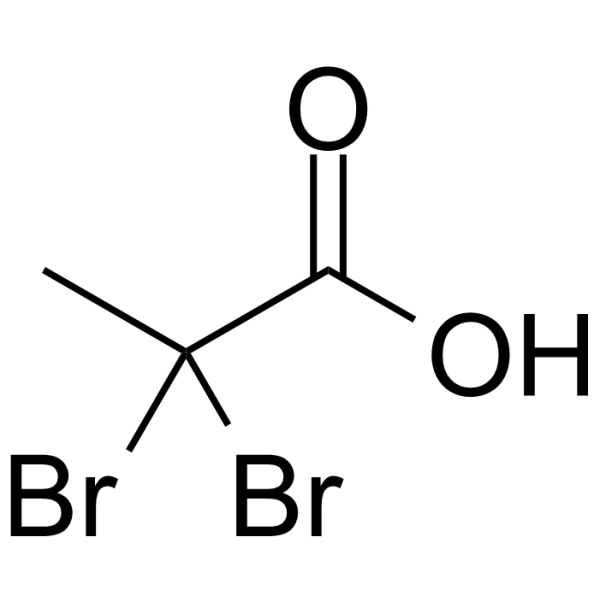
-
- HY-143450
-
|
|
Tyrosinase
|
Others
|
|
Tyrosinase-IN-3 (compound 54) is a potent inhibitor of tyrosinase. Tyrosinase is a copper-containing metalloenzyme that is responsible for the rate-limiting catalytic step in the melanin biosynthesis and enzymatic browning. Tyrosinase-IN-3 has the potential for the research of skin whitening agents and food preservatives .
|
-
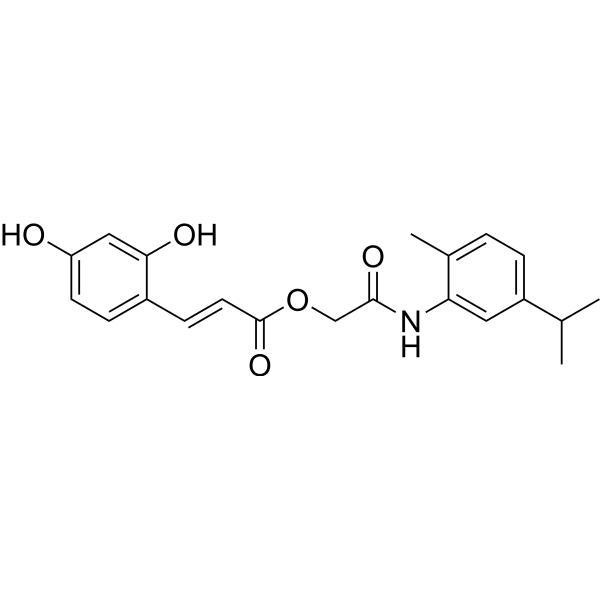
-
- HY-143451
-
|
|
Tyrosinase
|
Others
|
|
Tyrosinase-IN-4 (compound 34) is a potent inhibitor of tyrosinase. Tyrosinase is a copper-containing metalloenzyme that is responsible for the rate-limiting catalytic step in the melanin biosynthesis and enzymatic browning. Tyrosinase-IN-4 has the potential for the research of skin whitening agents and food preservatives .
|
-
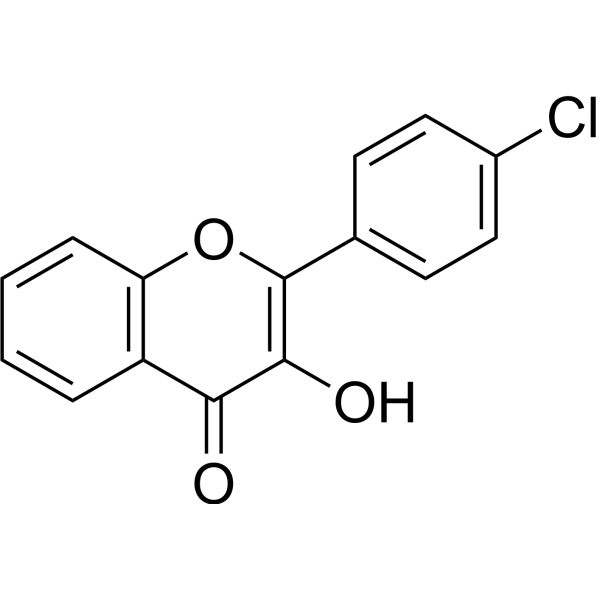
-
- HY-143448
-
|
|
Tyrosinase
|
Others
|
|
Tyrosinase-IN-1 (compound 90) is a potent inhibitor of tyrosinase. Tyrosinase is a copper-containing metalloenzyme that is responsible for the rate-limiting catalytic step in the melanin biosynthesis and enzymatic browning. Tyrosinase-IN-1 has the potential for the research of skin whitening agents and food preservatives .
|
-
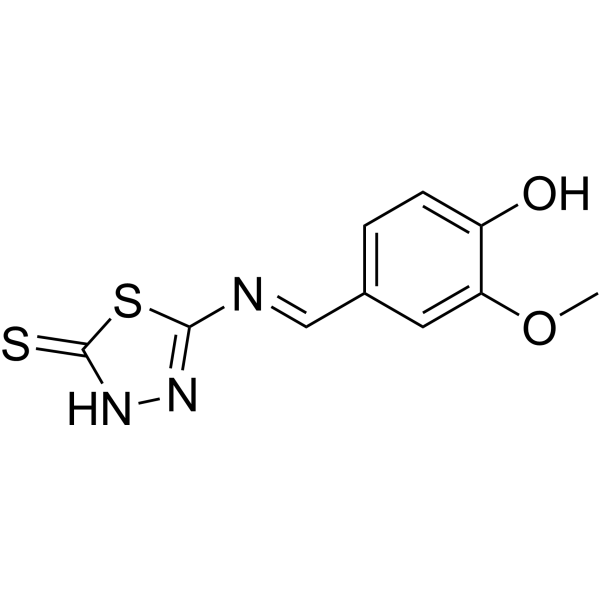
-
- HY-143449
-
|
|
Tyrosinase
|
Others
|
|
Tyrosinase-IN-2 (compound 67) is a potent inhibitor of tyrosinase. Tyrosinase is a copper-containing metalloenzyme that is responsible for the rate-limiting catalytic step in the melanin biosynthesis and enzymatic browning. Tyrosinase-IN-2 has the potential for the research of skin whitening agents and food preservatives .
|
-
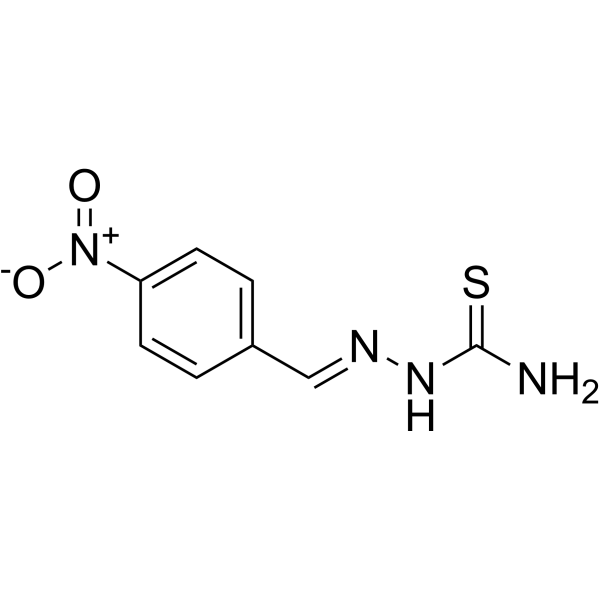
-
- HY-B1173
-
|
D-(+)-Camphor; (1R)-(+)-Camphor
|
Bacterial
|
Others
|
|
(+)-Camphor is a food additive used medicinally as a preservative.
|
-

-
- HY-B1773A
-
|
|
Biochemical Assay Reagents
|
Others
|
|
Sodium Propionate is used as a food preservative, bakery product and as a mold inhibitor in insect cell cultures. It is also used as a preservative in pharmaceuticals, cosmetics, agriculture and animal feed. It is used as a food additive. In addition, it inhibits the growth of lactic acid bacteria.
|
-

-
- HY-B0934
-
|
Ethyl parahydroxybenzoate; Ethyl 4-hydroxybenzoate
|
Bacterial
Fungal
|
Others
|
|
Ethylparaben is the ethyl ester of paraben and is used as an antifungal preservative and food additive .
|
-
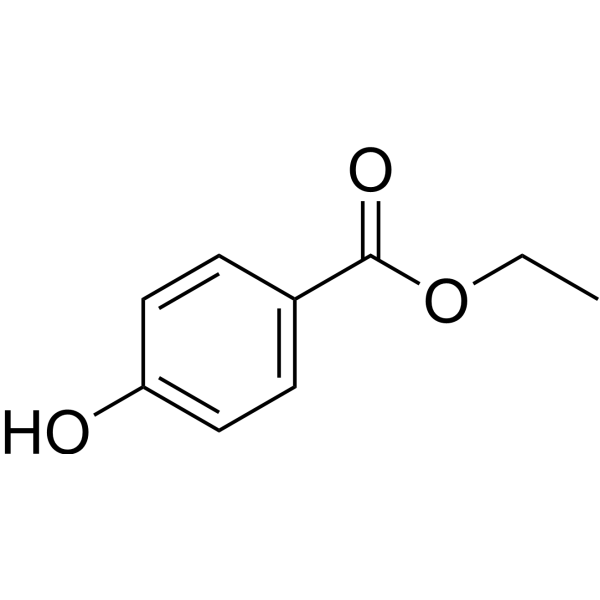
-
- HY-B1610E
-
|
Trisodium citrate dihydrate, meets USP testing specifications
|
Biochemical Assay Reagents
|
Cardiovascular Disease
|
|
Sodium citrate dihydrate, meets USP testing specifications is an anticoagulant and also used as a buffer and food preservatives .
|
-
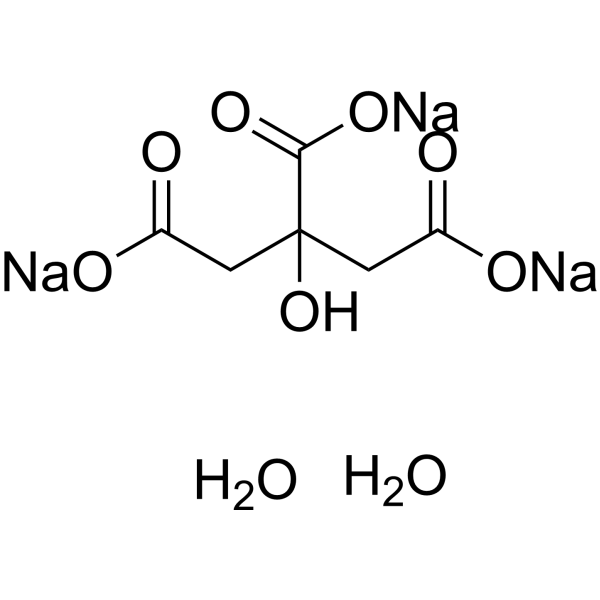
-
- HY-N0626A
-
-
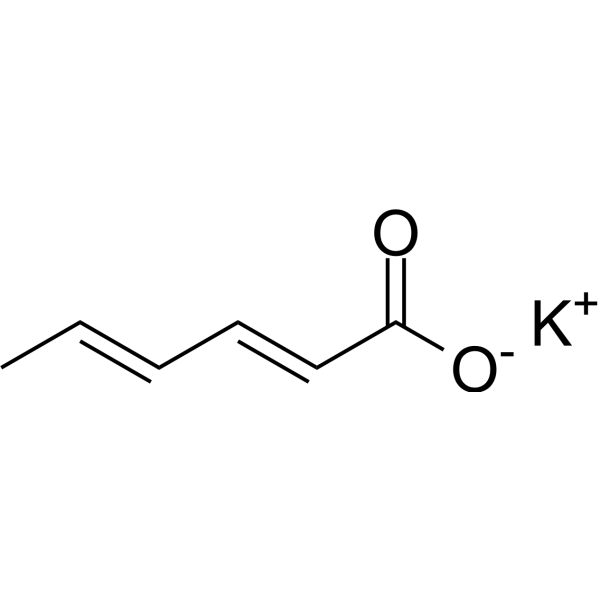
-
- HY-B1431
-
|
Butyl parahydroxybenzoate; Butyl paraben; Butyl 4-hydroxybenzoate
|
Bacterial
Endogenous Metabolite
DNA/RNA Synthesis
|
Infection
|
|
Butylparaben is an organic compound that has proven to be a very successful antimicrobial preservative in cosmetics, can also be used in active molecule suspensions, and as a food flavoring additive .
|
-
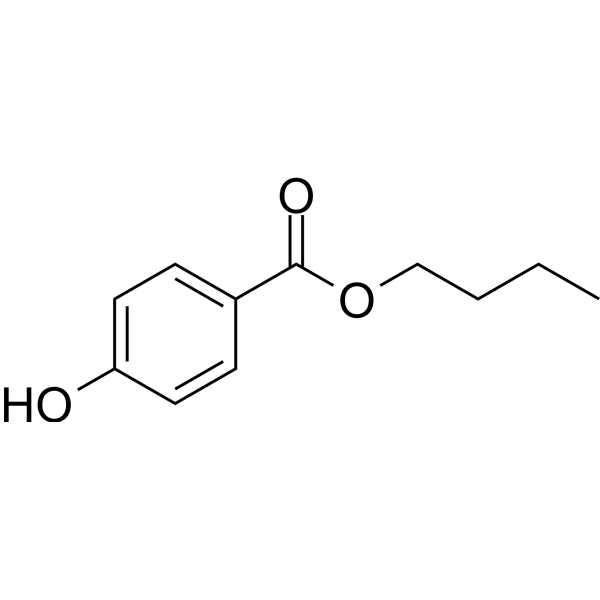
-
- HY-P4327
-
|
|
Bacterial
|
Infection
|
|
Hispidalin is a novel antimicrobial peptide with broad and efficient antibacterial activity against various bacterial and fungal pathogens, and can be used as an antibacterial agent and food preservative .
|
-

-
- HY-B0934R
-
|
Ethyl parahydroxybenzoate (Standard); Ethyl 4-hydroxybenzoate (Standard)
|
Bacterial
Fungal
|
Others
|
|
Ethylparaben (Standard) is the analytical standard of Ethylparaben. This product is intended for research and analytical applications. Ethylparaben is the ethyl ester of paraben and is used as an antifungal preservative and food additive .
|
-
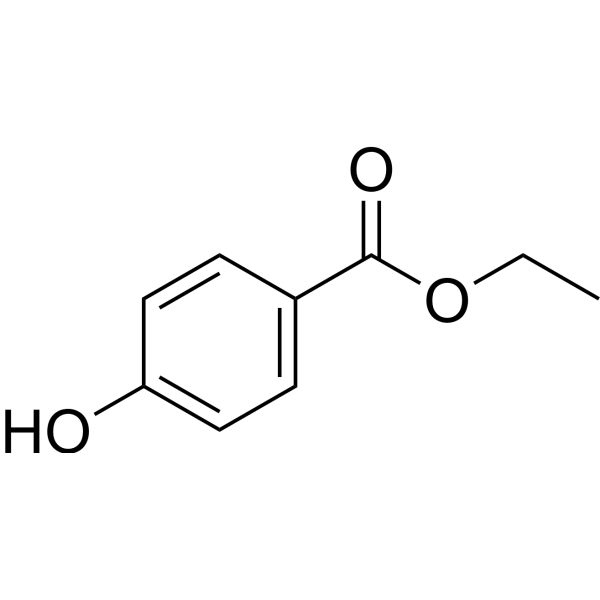
-
- HY-N1428S
-
-

-
- HY-N1428S1
-
-
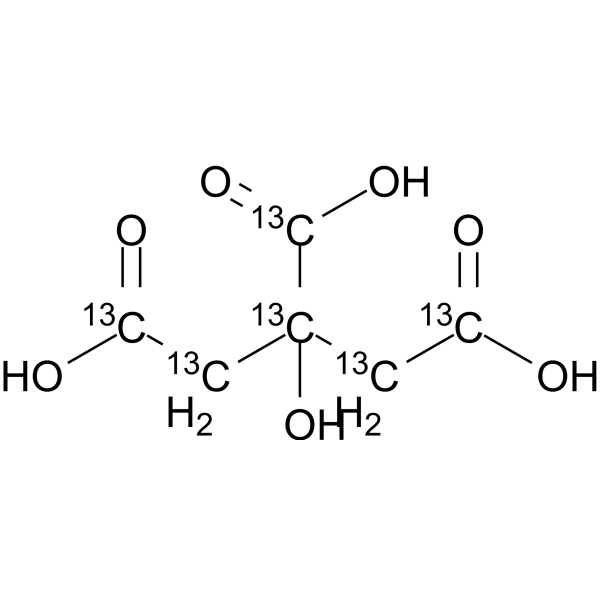
-
- HY-N0216A
-
|
|
Bacterial
Fungal
Endogenous Metabolite
|
Others
|
|
Benzoic acid lithium is an aromatic alcohol found in many plants and is a common additive in food, beverages, cosmetics and other products. Benzoic acid lithium inhibits bacteria and fungi and acts as a preservative .
|
-
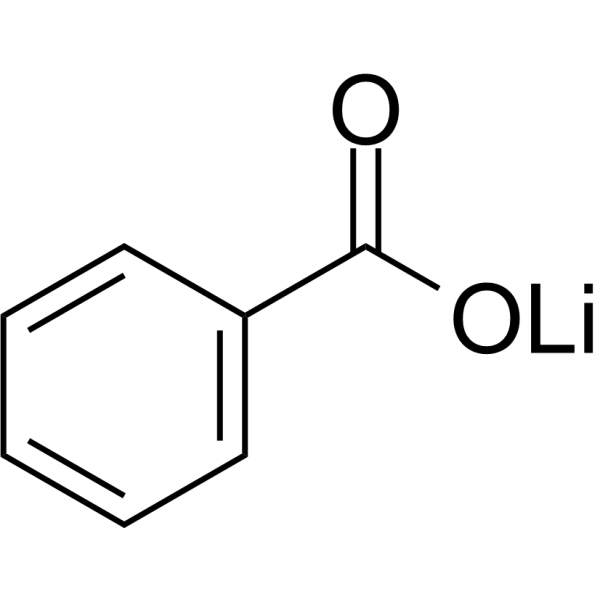
-
- HY-N0216
-
|
|
Bacterial
Fungal
Endogenous Metabolite
|
Infection
|
|
Benzoic acid is an aromatic alcohol existing naturally in many plants and is a common additive to food, drinks, cosmetics and other products. It acts as preservatives through inhibiting both bacteria and fungi .
|
-
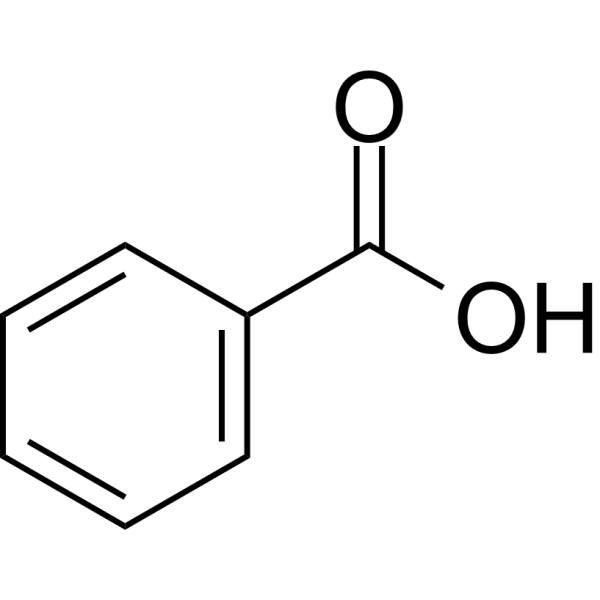
-
- HY-138650
-
|
Glyceryl monocaprylate; Sefsol 318
|
Bacterial
|
Inflammation/Immunology
|
|
Monocaprylin (Glyceryl monocaprylate), a monoglyceride of caprylic acid, exhibits an excellent antibacterial activity. Monocaprylin inhibits a variety of foodborne pathogenic and spoilage microorganisms and has the potential for an alternative food preservative research .
|
-
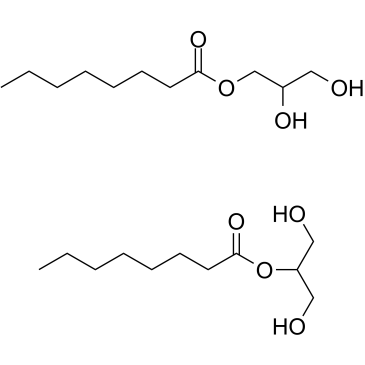
-
- HY-B1431S
-
|
Butyl parahydroxybenzoate-d4; Butyl paraben-d4; Butyl 4-hydroxybenzoate-d4
|
Isotope-Labeled Compounds
Bacterial
Endogenous Metabolite
|
Infection
|
|
Butylparaben-d4 is the deuterium labeled Butylparaben. Butylparaben is an organic compound, has proven to be a highly successful antimicrobial preservative in cosmetics, also used in medication suspensions, and as a flavoring additive in food.
|
-
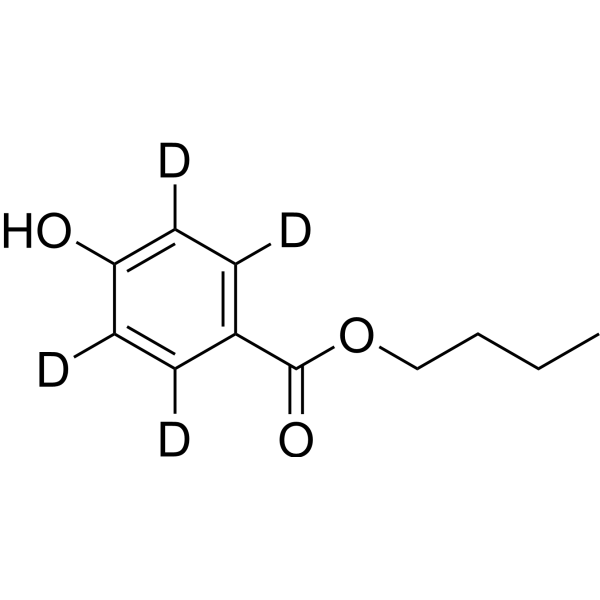
-
- HY-W010164
-
|
|
Biochemical Assay Reagents
|
Others
|
|
4-Hydroxybenzoate sodium, also known as sodium p-hydroxybenzoate or sodium paraben, is commonly used as a food preservative and cosmetic preservative. It can also be used as an additive in a variety of other products, including pharmaceuticals, personal care products, and industrial products. Additionally, 4-Hydroxybenzoate sodium has the potential to function as xenoestrogens, which may mimic the effects of estrogen in the body and affect hormonal balance.
|
-
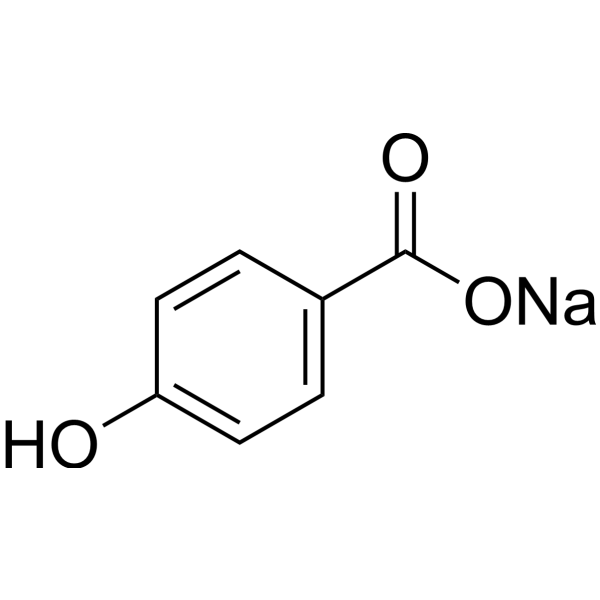
-
- HY-B1263
-
|
|
Bacterial
Fungal
|
Infection
Neurological Disease
|
|
Chlorobutanol is a pharmaceutical preservative. Chlorobutanol is active against a wide variety of Gram-positive and Gram-negative bacteria, and several mold spores and fungi. Chlorobutanol is widely used in food and cosmetic industry .
|
-
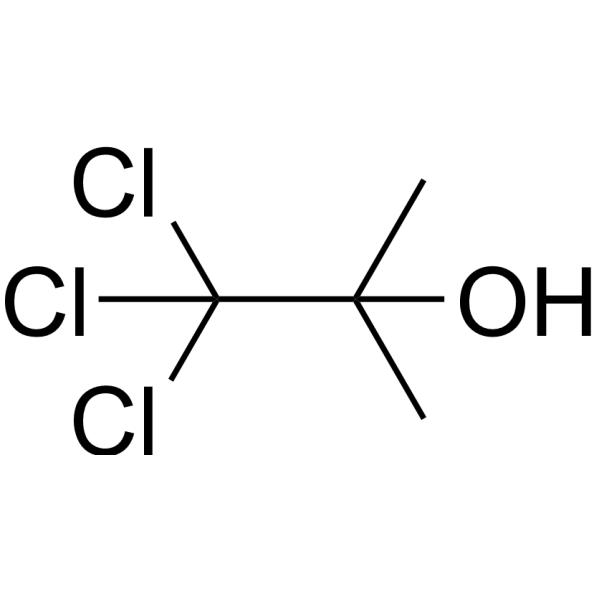
-
- HY-W089856
-
|
|
Bacterial
Fungal
|
Infection
Neurological Disease
|
|
Chlorobutanol hemihydrate is a pharmaceutical preservative. Chlorobutanol hemihydrate is active against a wide variety of Gram-positive and Gram-negative bacteria, and several mold spores and fungi. Chlorobutanol hemihydrate is widely used in food and cosmetic industry .
|
-
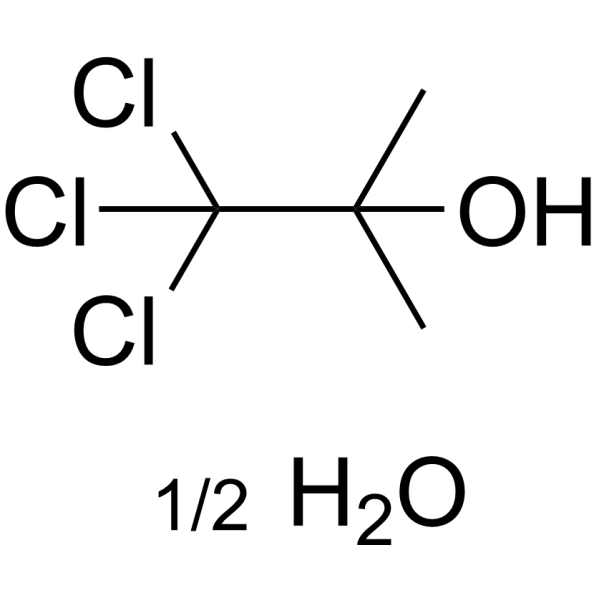
-
- HY-B1431S1
-
|
Butyl parahydroxybenzoate-13C6; Butyl paraben-13C6; Butyl 4-hydroxybenzoate-13C6
|
Bacterial
Endogenous Metabolite
|
Infection
|
|
Butylparaben- 13C6 is the 13C labeled Butylparaben[1]. Butylparaben is an organic compound, has proven to be a highly successful antimicrobial preservative in cosmetics, also used in medication suspensions, and as a flavoring additive in food.
|
-

-
- HY-N0216S2
-
|
|
Bacterial
Fungal
Endogenous Metabolite
|
Infection
|
|
Benzoic acid- 13C is the 13C-labeled Benzoic acid. Benzoic acid is an aromatic alcohol existing naturally in many plants and is a common additive to food, drinks, cosmetics and other products. It acts as preservatives through inhibiting both bacteria and fungi.
|
-
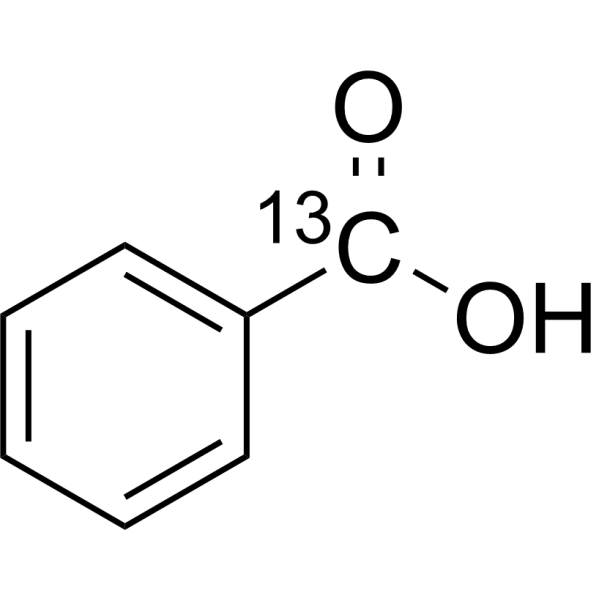
-
- HY-N0216S1
-
|
|
Bacterial
Fungal
Endogenous Metabolite
|
Infection
|
|
Benzoic acid- 13C6 is the 13C-labeled Benzoic acid. Benzoic acid is an aromatic alcohol existing naturally in many plants and is a common additive to food, drinks, cosmetics and other products. It acts as preservatives through inhibiting both bacteria and fungi.
|
-

-
- HY-N0216S
-
|
|
Bacterial
Fungal
Endogenous Metabolite
|
Infection
|
|
Benzoic acid-d5 is a deuterium substitute for Benzoic acid. Benzoic acid is an aromatic alcohol that occurs naturally in many plants and is a common additive in food, beverages, cosmetics and other products. Benzoic acid can act as a preservative by inhibiting bacteria and fungi[1][2].
|
-

-
- HY-B0133
-
|
Pimaricin
|
Fungal
Endogenous Metabolite
Antibiotic
Bacterial
|
Infection
|
|
Natamycin (Pimaricin) is a macrolide antibiotic agent produced by several Streptomyces strains. Natamycin inhibits the growth of fungi via inhibition of amino acid and glucose transport across the plasma membrane. Natamycin is a food preservative, an antifungal agent in agriculture, and is widely used for fungal keratitis research .
|
-
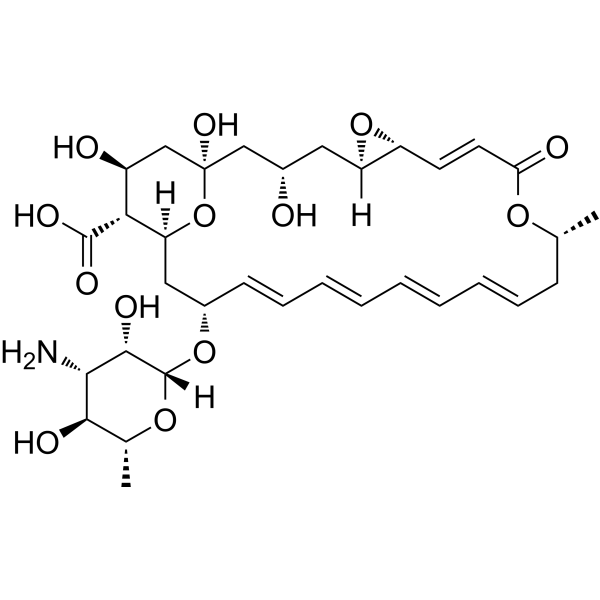
-
- HY-B1066
-
|
Butylated hydroxyanisole; BHA; E320
|
Reactive Oxygen Species
Ferroptosis
|
Neurological Disease
Inflammation/Immunology
|
|
Butylhydroxyanisole (Butylated hydroxyanisole) is an antioxidant used as a food additive preservative. Butylhydroxyanisole mediates liver toxicity, retardation in reproductive organ development and learning, and sleep deficit. Butylhydroxyanisole exerts neurotoxic effects and leads to disruption of the brain and nerve development . Butylhydroxyanisole is a ferroptosis inducer .
|
-
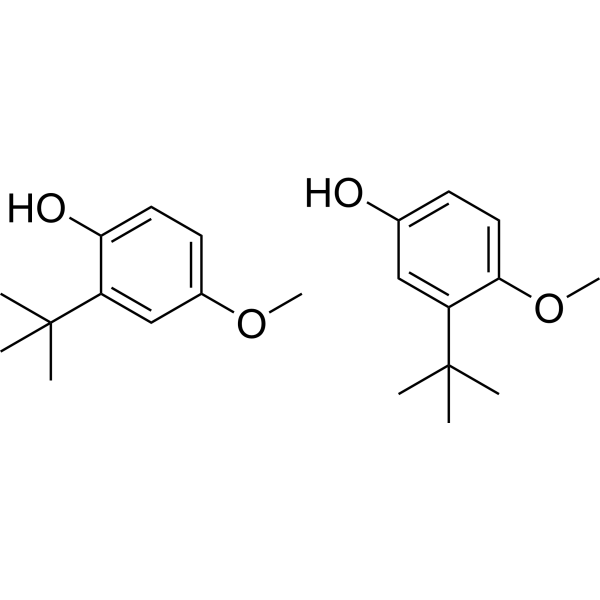
-
- HY-W005355
-
|
|
Biochemical Assay Reagents
|
Others
|
|
Sodium 2-oxobutanoate is an organic compound commonly used as a food additive and industrial raw material. It can be used as an acidity regulator, leavening agent and preservative, and is often used in the fields of bread, baked goods and canning. In addition, the compound is used in the production of certain industrial products, such as in plastics, textiles and dyes.
|
-
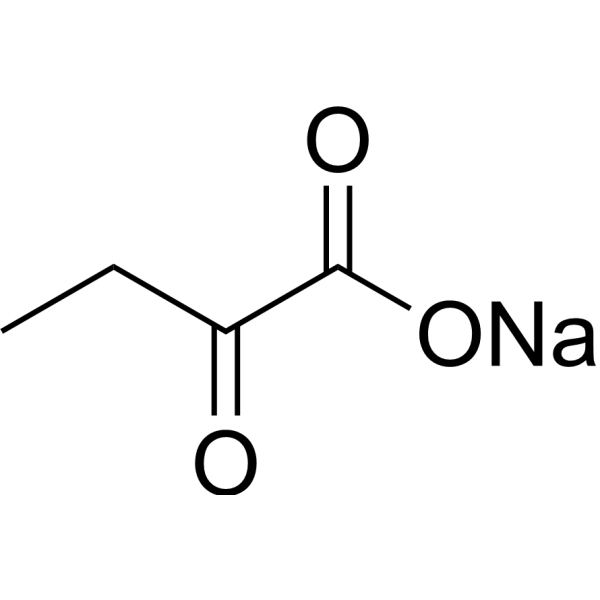
-
- HY-N1428A
-
|
|
Endogenous Metabolite
Apoptosis
Antibiotic
|
Metabolic Disease
Inflammation/Immunology
|
|
Citric acid monohydrate is a natural preservative and food tartness enhancer. Citric acid monohydrate induces apoptosis and cell cycle arrest at G2/M phase and S phase. Citric acid monohydrate cause oxidative damage of the liver by means of the decrease of antioxidative enzyme activities. Citric acid monohydrate causes renal toxicity in mice .
|
-

-
- HY-N1428
-
-

-
- HY-N2026
-
|
Propyl parahydroxybenzoate; Propyl 4-hydroxybenzoate
|
Endogenous Metabolite
Bacterial
Apoptosis
|
Infection
|
|
Propylparaben (Propyl parahydroxybenzoate) is an antibacterial preservative that can be produced by plants and bacteria. Propylparaben is commonly used in cosmetics, pharmaceuticals and foods. Propylparaben disrupts follicular growth and steroidogenic function by altering cell cycle, apoptosis and steroidogenic pathways. Propylparaben also reduced sperm count and motility in rats .
|
-
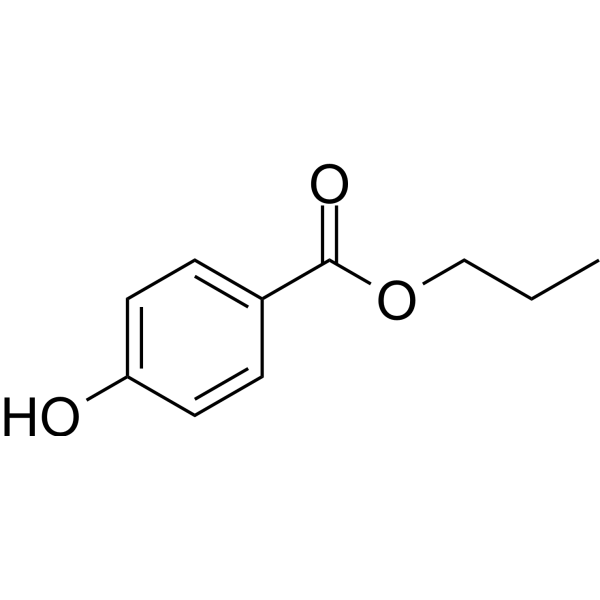
-
- HY-N2026A
-
|
Propyl parahydroxybenzoate sodium; Propyl 4-hydroxybenzoate sodium
|
Endogenous Metabolite
Bacterial
Apoptosis
|
Infection
|
|
Propylparaben sodium (Propyl parahydroxybenzoate) is an antimicrobial preservative which can be produced naturally by plants and bacteria. Propylparaben sodium is prevalently used in cosmetics, pharmaceuticals, and foods. Propylparaben sodium disrupts antral follicle growth and steroidogenic function by altering the cell-cycle, apoptosis, and steroidogenesis pathways. Propylparaben sodium also decreases sperm number and motile activity in rats .
|
-
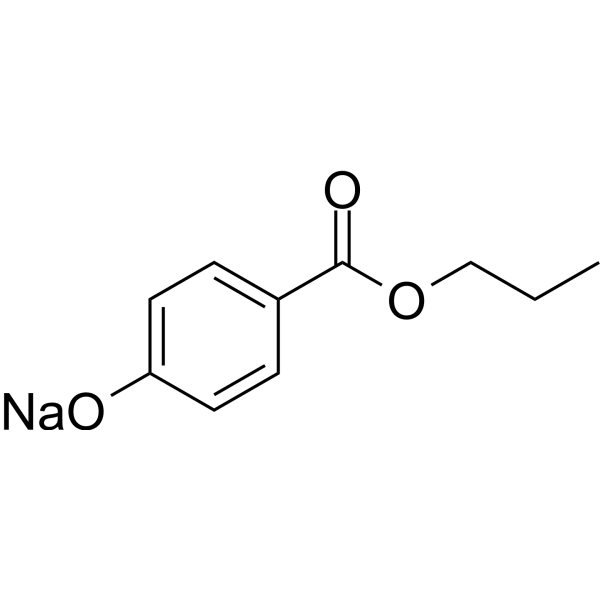
-
- HY-B2201
-
|
Sodium citrate; Trisodium citrate anhydrous
|
Apoptosis
Endogenous Metabolite
|
Metabolic Disease
|
|
Citric acid trisodium is a natural preservative and food tartness enhancer. Citric acid trisodium induces apoptosis and cell cycle arrest at G2/M phase and S phase. Citric acid trisodium cause oxidative damage of the liver by means of the decrease of antioxidative enzyme activities. Citric acid trisodium causes renal toxicity in mice .
|
-

-
- HY-P2902
-
|
|
Endogenous Metabolite
|
Cancer
|
|
Glucose oxidase is used in the food and beverage industry as a preservative and stabilizer and is commonly derived from the fungus Aspergillus niger. Glucose oxidase can react with intracellular glucose and oxygen (O2) to produce hydrogen peroxide (H2O2) and gluconic acid, which can cut off the nutrition source of cancer cells and consequently inhibit their proliferation .
|
-
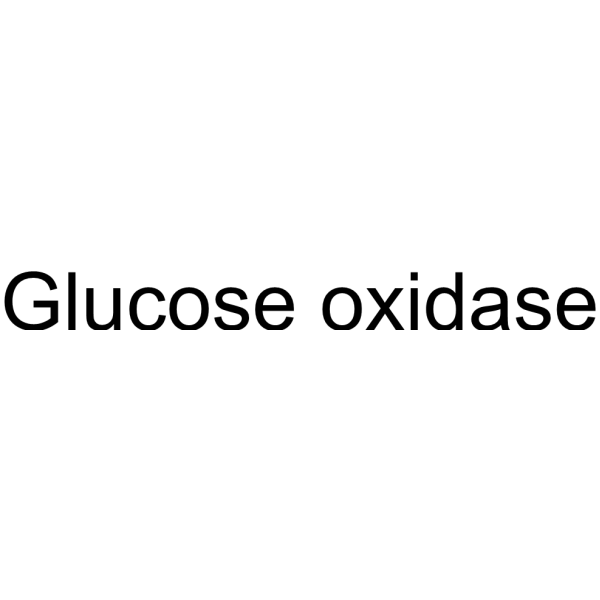
-
- HY-B1066R
-
|
Butylated hydroxyanisole (Standard); BHA (Standard); E320 (Standard)
|
Reactive Oxygen Species
Ferroptosis
|
Neurological Disease
Inflammation/Immunology
|
|
Butylhydroxyanisole (Standard) is the analytical standard of Butylhydroxyanisole. This product is intended for research and analytical applications. Butylhydroxyanisole (Butylated hydroxyanisole) is an antioxidant used as a food additive preservative. Butylhydroxyanisole mediates liver toxicity, retardation in reproductive organ development and learning, and sleep deficit. Butylhydroxyanisole exerts neurotoxic effects and leads to disruption of the brain and nerve development . Butylhydroxyanisole is a ferroptosis inducer .
|
-
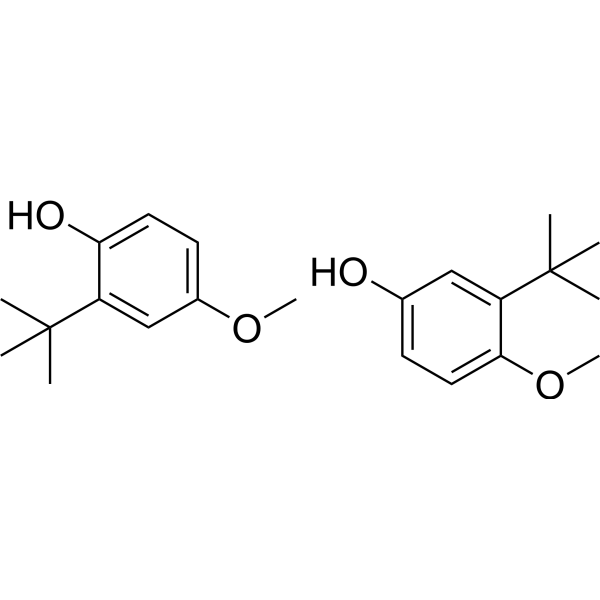
-
- HY-P10352
-
|
|
Bacterial
|
Infection
|
|
Pediocin PA-1 is a broad-spectrum lactic acid bacterial bacteriocin that inhibits the activity of foodborne pathogens such as Listeria monocytogenes and Gram-positive bacteria. Pediocin PA-1 can be used as a food biopreservative .
|
-

-
- HY-N0349S
-
|
Methyl 4-hydroxybenzoate-d4
|
Bacterial
Endogenous Metabolite
|
Infection
|
|
Methyl paraben-d4 is the deuterium labeled Methyl Paraben[1]. Methyl Paraben, isolated from the barks of Tsuga dumosa the methyl ester of p-hydroxybenzoic acid, is a standardized chemical allergen. Methyl Paraben is a stable, non-volatile compound used as an antimicrobial preservative in foods, agents and cosmetics. The physiologic effect of Methyl Paraben is by means of increased histamine release, and cell-mediated immunity[2].
|
-

-
- HY-N1428S4
-
|
|
Isotope-Labeled Compounds
Endogenous Metabolite
Apoptosis
Antibiotic
|
Cancer
|
|
Citric acid- 18O is 18O-labeled Citric acid (HY-N1428) Citric acid is a natural preservative and food tartness enhancer. Citric acid induces apoptosis and cell cycle arrest at G2/M phase and S phase in HaCaT cells. Citric acid cause oxidative damage of the liver by means of the decrease of antioxidative enzyme activities. Citric acid causes renal toxicity in mice.
|
-

-
- HY-B1814
-
|
Synkamin; Synkamin base
|
Pyruvate Kinase
Bacterial
Fungal
|
Infection
Cancer
|
|
Vitamin K5 (Synkamin) is a photosensitizer and a antimicrobial agent. Vitamin K5 is a specific PKM2 inhibitor with IC50 values of 28, 191 and 120 μM for PKM2, PKM1 and PKL. Vitamin K5 induces apoptosis of colon 26 cells. Vitamin K5 can be used for the research of infection and cancer, and it also can be used as a preservative for pharmaceuticals, foods, and beverages .
|
-
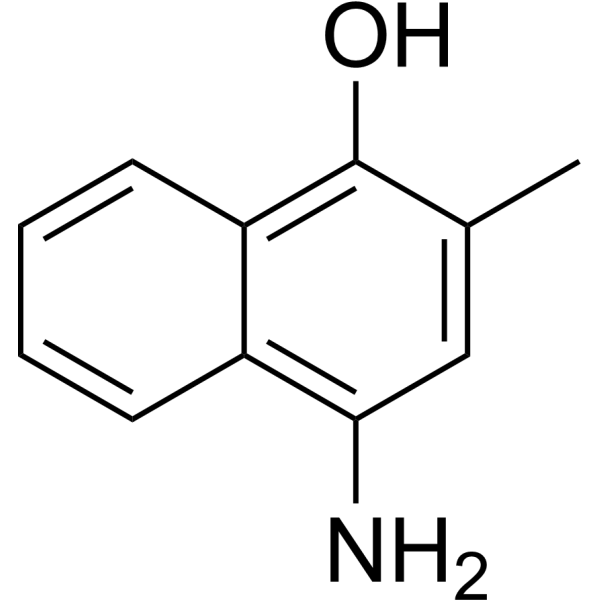
-
- HY-N2026S1
-
|
Propyl parahydroxybenzoate-d4; Propyl 4-hydroxybenzoate-d4
|
Apoptosis
Bacterial
Endogenous Metabolite
|
Infection
|
|
Propylparaben-d4 is the deuterium labeled Propylparaben[1]. Propylparaben (Propyl parahydroxybenzoate) is an antimicrobial preservative which can be produced naturally by plants and bacteria. Propylparaben is prevalently used in cosmetics, pharmaceuticals, and foods. Propylparaben disrupts antral follicle growth and steroidogenic function by altering the cell-cycle, apoptosis, and steroidogenesis pathways. Propylparaben also decreases sperm number and motile activity in rats[2][3][4].
|
-

-
- HY-N1428S6
-
|
|
Isotope-Labeled Compounds
Endogenous Metabolite
Apoptosis
Antibiotic
|
Cancer
|
|
Citric acid-d4-1 is deuterated labeled Citric acid (HY-N1428) Citric acid is a natural preservative and food tartness enhancer. Citric acid induces apoptosis and cell cycle arrest at G2/M phase and S phase in HaCaT cells. Citric acid cause oxidative damage of the liver by means of the decrease of antioxidative enzyme activities. Citric acid causes renal toxicity in mice.
|
-

-
- HY-W250308
-
|
Epsilon-polylysine; ε-Polylysine; ε-PL
|
Bacterial
|
Others
|
|
Epsilon-polylysine is an antimicrobial peptide that can be produced by bacteria such as Streptomyces. Epsilon-polylysine inhibits the growth of microorganisms such as bacteria, yeasts and molds and is therefore often used as a green food additive and preservative in various food and beverage products. Epsilon-polylysine has a variety of properties, including thermal stability, resistance to acidic conditions, and broad-spectrum antimicrobial activity. Epsilon-polylysine can be loaded on other materials to form nanoparticles or form nanofiber membranes for targeted delivery to exert sustained antibacterial efficacy. Epsilon-polylysine is also used as a liposome stabilizer .
|
-
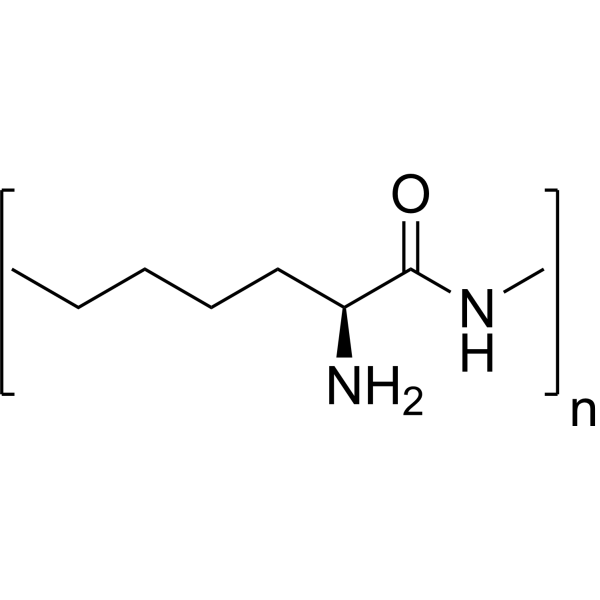
-
- HY-115340
-
|
|
Biochemical Assay Reagents
|
Others
|
|
Decanoic acid sodium, also known as Decanoic acid sodium, is a salt of the fatty acid capric acid. It is easily soluble in water and has a slightly soapy smell. Decanoic acid sodium acts as a penetration enhancer, which means it increases the absorption and bioavailability of drugs across biological membranes, including the intestinal epithelium and the blood-brain barrier. This property makes it useful in pharmaceutical formulations to improve drug delivery and effectiveness. Furthermore, Decanoic acid sodium has potential applications in food preservatives and cosmetics due to its antibacterial properties.
|
-

-
- HY-N1428S3
-
|
|
Apoptosis
Endogenous Metabolite
Antibiotic
|
|
|
Citric acid- 13C3 is the 13C labeled Citric acid[1]. Citric acid is a natural preservative and food tartness enhancer. Citric acid induces apoptosis and cell cycle arrest at G2/M phase and S phase in HaCaT cells. Citric acid cause oxidative damage of the liver by means of the decrease of antioxidative enzyme activities. Citric acid causes renal toxicity in mice[2][3][4].
|
-

-
- HY-N2026S
-
|
Propyl parahydroxybenzoate-d7; Propyl 4-hydroxybenzoate-d7
|
Isotope-Labeled Compounds
|
Others
|
|
Propylparaben-d7 (Propyl parahydroxybenzoate-d7)is the deuterium labeledPropylparaben(HY-N2026) . Propylparaben (Propyl parahydroxybenzoate) is an antimicrobial preservative which can be produced naturally by plants and bacteria. Propylparaben is prevalently used in cosmetics, pharmaceuticals, and foods. Propylparaben disrupts antral follicle growth and steroidogenic function by altering the cell-cycle, apoptosis, and steroidogenesis pathways. Propylparaben also decreases sperm number and motile activity in rats .
|
-

-
- HY-N0349S1
-
|
Methyl 4-hydroxybenzoate-13C6
|
Isotope-Labeled Compounds
|
Infection
|
|
Methyl Paraben- 13C6 (Methyl 4-hydroxybenzoate- 13C6) is a 13C labeled Methyl Paraben (HY-N0349) . Methyl Paraben, isolated from the barks of Tsuga dumosa the methyl ester of p-hydroxybenzoic acid, is a standardized chemical allergen. Methyl Paraben is a stable, non-volatile compound used as an antimicrobial preservative in foods, agents and cosmetics. The physiologic effect of Methyl Paraben is by means of increased histamine release, and cell-mediated immunity .
|
-

-
- HY-N0273S
-
|
Brassin lactone-d5
|
Isotope-Labeled Compounds
Apoptosis
|
Cancer
|
|
Brassinolide-d5 (Brassin lactone-d5) is the deuterated labeled Brassinolide (HY-N0273). Citric acid is a natural preservative and food tartness enhancer. Citric acid induces apoptosis and cell cycle arrest at G2/M phase and S phase in HaCaT cells. Citric acid cause oxidative damage of the liver by means of the decrease of antioxidative enzyme activities. Citric acid causes renal toxicity in mice .
|
-

-
- HY-W099594
-
|
Benzyldimethyldodecylammonium bromide
|
Biochemical Assay Reagents
|
Others
|
|
N-Benzyl-N, N-dimethyldodecan-1-aminium bromide, also known as Benzalkonium Chloride (BAC), is a quaternary ammonium compound widely used as an antimicrobial and surfactant in various industries. BAC is commonly used as a disinfectant and antiseptic in a variety of products including hand sanitizers, disinfectant wipes and eye drops. Its ability to kill bacteria, viruses and fungi makes it an effective tool in preventing the spread of infection. BAC is also used as a preservative and disinfectant in the food industry. It is added to food packaging and processing equipment to prevent the growth of microorganisms and increase the shelf life of foods. Additionally, BACs are found in many household products such as cleaning solutions, fabric softeners and personal care products. Its surfactant properties allow it to be used to reduce surface tension and increase the effectiveness of cleaning agents. Although BAC has many uses, ingestion or exposure to high concentrations of BAC can cause skin irritation and other adverse effects.
|
-
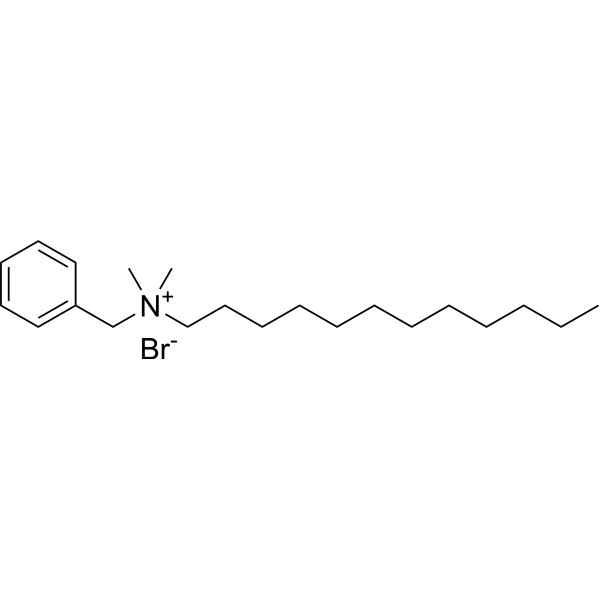
- HY-N0711
-
|
Cymophenol
|
Notch
Apoptosis
Fungal
Endogenous Metabolite
Bacterial
|
Infection
Inflammation/Immunology
Cancer
|
|
Carvacrol is an orally active monoterpenic phenol that can be extract from an abundant number of aromatic plants, including thyme and oregano, possessing antioxidant, antibacterial, antifungal, anticancer, anti-inflammatory, hepatoprotective, spasmolytic, and vasorelaxant properties. Carvacrol also causes cell cycle arrest in G0/G1, downregulates Notch-1, and Jagged-1, and induces apoptosis. Carvacrol is used in low concentrations as a food flavoring ingredient and preservative, as well as a fragrance ingredient in cosmetic formulations .
|
-
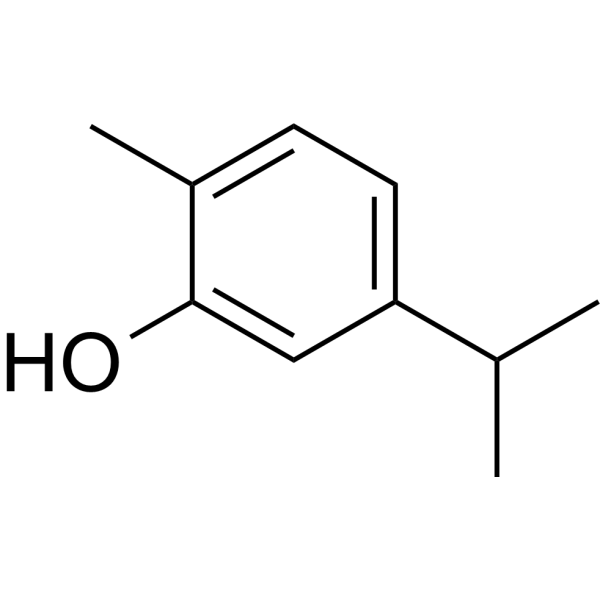
- HY-P1032S1
-
|
|
Isotope-Labeled Compounds
Endogenous Metabolite
|
Others
|
|
Angiotensin I- 13C5, 15N (human, mouse, rat) is the 13C and 15N labeled Angiotensin I (human, mouse, rat) (HY-P1032). Citric acid is a natural preservative and food tartness enhancer. Citric acid induces apoptosis and cell cycle arrest at G2/M phase and S phase in HaCaT cells. Citric acid cause oxidative damage of the liver by means of the decrease of antioxidative enzyme activities. Citric acid causes renal toxicity in mice .
|
-

- HY-B2227B
-
|
Lactic acid sodium
|
Bacterial
|
Metabolic Disease
|
|
Lactate (Lactic acid) sodium is the product of glycogenolysis and glycolysis . Lactate (Lactic acid) sodium is an organic salt that is mainly used as a buffer and pH adjuster for injection solutions. Lactate sodium can be metabolized by the body into sodium bicarbonate, which in turn acts to increase the pH of the blood. Lactate sodium is used to improve metabolic acidosis and hypovolemic states. In terms of pharmaceutical preparations, Lactate sodium is often used in combination with sodium chloride, glucose, etc. to form normal saline or compound liquid intravenous injection . Lactate sodium also has antimicrobial activity, which can be used as a food preservative .
|
-

- HY-W032013S3
-
|
Octanol-d5
|
Calcium Channel
Endogenous Metabolite
Isotope-Labeled Compounds
|
Others
|
|
1-Octanol-d5 is deuterated labeled Carvacrol (HY-N0711). Carvacrol is an orally active monoterpenic phenol that can be extract from an abundant number of aromatic plants, including thyme and oregano, possessing antioxidant, antibacterial, antifungal, anticancer, anti-inflammatory, hepatoprotective, spasmolytic, and vasorelaxant properties. Carvacrol also causes cell cycle arrest in G0/G1, downregulates Notch-1, and Jagged-1, and induces apoptosis. Carvacrol is used in low concentrations as a food flavoring ingredient and preservative, as well as a fragrance ingredient in cosmetic formulations .
|
-
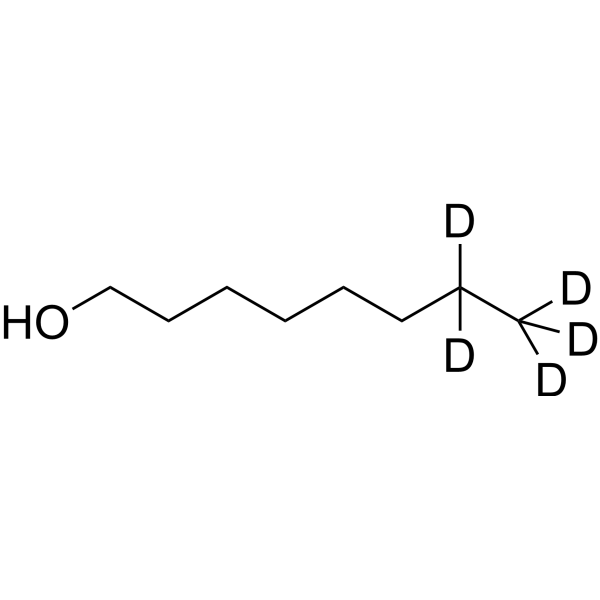
| Cat. No. |
Product Name |
Type |
-
- HY-B1773A
-
|
|
Biochemical Assay Reagents
|
|
Sodium Propionate is used as a food preservative, bakery product and as a mold inhibitor in insect cell cultures. It is also used as a preservative in pharmaceuticals, cosmetics, agriculture and animal feed. It is used as a food additive. In addition, it inhibits the growth of lactic acid bacteria.
|
-
- HY-B1610E
-
|
Trisodium citrate dihydrate, meets USP testing specifications
|
Buffer Reagents
|
|
Sodium citrate dihydrate, meets USP testing specifications is an anticoagulant and also used as a buffer and food preservatives .
|
-
- HY-W005355
-
|
|
Biochemical Assay Reagents
|
|
Sodium 2-oxobutanoate is an organic compound commonly used as a food additive and industrial raw material. It can be used as an acidity regulator, leavening agent and preservative, and is often used in the fields of bread, baked goods and canning. In addition, the compound is used in the production of certain industrial products, such as in plastics, textiles and dyes.
|
-
- HY-N1428A
-
|
|
Biochemical Assay Reagents
|
|
Citric acid monohydrate is a natural preservative and food tartness enhancer. Citric acid monohydrate induces apoptosis and cell cycle arrest at G2/M phase and S phase. Citric acid monohydrate cause oxidative damage of the liver by means of the decrease of antioxidative enzyme activities. Citric acid monohydrate causes renal toxicity in mice .
|
-
- HY-W010164
-
|
|
Biochemical Assay Reagents
|
|
4-Hydroxybenzoate sodium, also known as sodium p-hydroxybenzoate or sodium paraben, is commonly used as a food preservative and cosmetic preservative. It can also be used as an additive in a variety of other products, including pharmaceuticals, personal care products, and industrial products. Additionally, 4-Hydroxybenzoate sodium has the potential to function as xenoestrogens, which may mimic the effects of estrogen in the body and affect hormonal balance.
|
-
- HY-B2201
-
|
Sodium citrate; Trisodium citrate anhydrous
|
Biochemical Assay Reagents
|
|
Citric acid trisodium is a natural preservative and food tartness enhancer. Citric acid trisodium induces apoptosis and cell cycle arrest at G2/M phase and S phase. Citric acid trisodium cause oxidative damage of the liver by means of the decrease of antioxidative enzyme activities. Citric acid trisodium causes renal toxicity in mice .
|
-
- HY-P2902
-
|
|
Biochemical Assay Reagents
|
|
Glucose oxidase is used in the food and beverage industry as a preservative and stabilizer and is commonly derived from the fungus Aspergillus niger. Glucose oxidase can react with intracellular glucose and oxygen (O2) to produce hydrogen peroxide (H2O2) and gluconic acid, which can cut off the nutrition source of cancer cells and consequently inhibit their proliferation .
|
-
- HY-W250308
-
|
Epsilon-polylysine; ε-Polylysine; ε-PL
|
Biochemical Assay Reagents
|
|
Epsilon-polylysine is an antimicrobial peptide that can be produced by bacteria such as Streptomyces. Epsilon-polylysine inhibits the growth of microorganisms such as bacteria, yeasts and molds and is therefore often used as a green food additive and preservative in various food and beverage products. Epsilon-polylysine has a variety of properties, including thermal stability, resistance to acidic conditions, and broad-spectrum antimicrobial activity. Epsilon-polylysine can be loaded on other materials to form nanoparticles or form nanofiber membranes for targeted delivery to exert sustained antibacterial efficacy. Epsilon-polylysine is also used as a liposome stabilizer .
|
-
- HY-115340
-
|
|
Biochemical Assay Reagents
|
|
Decanoic acid sodium, also known as Decanoic acid sodium, is a salt of the fatty acid capric acid. It is easily soluble in water and has a slightly soapy smell. Decanoic acid sodium acts as a penetration enhancer, which means it increases the absorption and bioavailability of drugs across biological membranes, including the intestinal epithelium and the blood-brain barrier. This property makes it useful in pharmaceutical formulations to improve drug delivery and effectiveness. Furthermore, Decanoic acid sodium has potential applications in food preservatives and cosmetics due to its antibacterial properties.
|
-
- HY-W099594
-
|
Benzyldimethyldodecylammonium bromide
|
Biochemical Assay Reagents
|
|
N-Benzyl-N, N-dimethyldodecan-1-aminium bromide, also known as Benzalkonium Chloride (BAC), is a quaternary ammonium compound widely used as an antimicrobial and surfactant in various industries. BAC is commonly used as a disinfectant and antiseptic in a variety of products including hand sanitizers, disinfectant wipes and eye drops. Its ability to kill bacteria, viruses and fungi makes it an effective tool in preventing the spread of infection. BAC is also used as a preservative and disinfectant in the food industry. It is added to food packaging and processing equipment to prevent the growth of microorganisms and increase the shelf life of foods. Additionally, BACs are found in many household products such as cleaning solutions, fabric softeners and personal care products. Its surfactant properties allow it to be used to reduce surface tension and increase the effectiveness of cleaning agents. Although BAC has many uses, ingestion or exposure to high concentrations of BAC can cause skin irritation and other adverse effects.
|
| Cat. No. |
Product Name |
Target |
Research Area |
-
- HY-P4327
-
|
|
Bacterial
|
Infection
|
|
Hispidalin is a novel antimicrobial peptide with broad and efficient antibacterial activity against various bacterial and fungal pathogens, and can be used as an antibacterial agent and food preservative .
|
-
- HY-P10352
-
|
|
Bacterial
|
Infection
|
|
Pediocin PA-1 is a broad-spectrum lactic acid bacterial bacteriocin that inhibits the activity of foodborne pathogens such as Listeria monocytogenes and Gram-positive bacteria. Pediocin PA-1 can be used as a food biopreservative .
|
-
- HY-P1032S1
-
|
|
Isotope-Labeled Compounds
Endogenous Metabolite
|
Others
|
|
Angiotensin I- 13C5, 15N (human, mouse, rat) is the 13C and 15N labeled Angiotensin I (human, mouse, rat) (HY-P1032). Citric acid is a natural preservative and food tartness enhancer. Citric acid induces apoptosis and cell cycle arrest at G2/M phase and S phase in HaCaT cells. Citric acid cause oxidative damage of the liver by means of the decrease of antioxidative enzyme activities. Citric acid causes renal toxicity in mice .
|
| Cat. No. |
Product Name |
Category |
Target |
Chemical Structure |
-
- HY-N0626
-
-

-
- HY-B1173
-
-

-
- HY-B0934
-
-

-
- HY-N0626A
-
-

-
- HY-B1431
-
-

-
- HY-B0934R
-
-

-
- HY-N0216A
-
-

-
- HY-N0216
-
-

-
- HY-B0133
-
-

-
- HY-N1428A
-
-

-
- HY-N1428
-
-

-
- HY-N2026
-
-

-
- HY-N2026A
-
-

-
- HY-B2201
-
-

-
- HY-W250308
-
-

-
- HY-N0711
-
|
Cymophenol
|
Structural Classification
Monophenols
Preservatives
Classification of Application Fields
Labiatae
Phenols
Plants
Inflammation/Immunology
Disease Research Fields
Food Research
|
Notch
Apoptosis
Fungal
Endogenous Metabolite
Bacterial
|
|
Carvacrol is an orally active monoterpenic phenol that can be extract from an abundant number of aromatic plants, including thyme and oregano, possessing antioxidant, antibacterial, antifungal, anticancer, anti-inflammatory, hepatoprotective, spasmolytic, and vasorelaxant properties. Carvacrol also causes cell cycle arrest in G0/G1, downregulates Notch-1, and Jagged-1, and induces apoptosis. Carvacrol is used in low concentrations as a food flavoring ingredient and preservative, as well as a fragrance ingredient in cosmetic formulations .
|
-

| Cat. No. |
Product Name |
Chemical Structure |
-
- HY-N1428S
-
|
|
|
Citric acid-d4 is the deuterium labeled Citric acid. Citric acid is a weak organic tricarboxylic acid found in citrus fruits. Citric acid is a natural preservative and food tartness enhancer.
|
-

-
- HY-N1428S1
-
|
|
|
Citric acid- 13C6 is the 13C-labeled Citric acid. Citric acid is a weak organic tricarboxylic acid found in citrus fruits. Citric acid is a natural preservative and food tartness enhancer.
|
-

-
- HY-B1431S
-
|
|
|
Butylparaben-d4 is the deuterium labeled Butylparaben. Butylparaben is an organic compound, has proven to be a highly successful antimicrobial preservative in cosmetics, also used in medication suspensions, and as a flavoring additive in food.
|
-

-
- HY-B1431S1
-
|
|
|
Butylparaben- 13C6 is the 13C labeled Butylparaben[1]. Butylparaben is an organic compound, has proven to be a highly successful antimicrobial preservative in cosmetics, also used in medication suspensions, and as a flavoring additive in food.
|
-

-
- HY-N0216S2
-
|
|
|
Benzoic acid- 13C is the 13C-labeled Benzoic acid. Benzoic acid is an aromatic alcohol existing naturally in many plants and is a common additive to food, drinks, cosmetics and other products. It acts as preservatives through inhibiting both bacteria and fungi.
|
-

-
- HY-N0216S1
-
|
|
|
Benzoic acid- 13C6 is the 13C-labeled Benzoic acid. Benzoic acid is an aromatic alcohol existing naturally in many plants and is a common additive to food, drinks, cosmetics and other products. It acts as preservatives through inhibiting both bacteria and fungi.
|
-

-
- HY-N0216S
-
|
|
|
Benzoic acid-d5 is a deuterium substitute for Benzoic acid. Benzoic acid is an aromatic alcohol that occurs naturally in many plants and is a common additive in food, beverages, cosmetics and other products. Benzoic acid can act as a preservative by inhibiting bacteria and fungi[1][2].
|
-

-
- HY-N0349S
-
|
|
|
Methyl paraben-d4 is the deuterium labeled Methyl Paraben[1]. Methyl Paraben, isolated from the barks of Tsuga dumosa the methyl ester of p-hydroxybenzoic acid, is a standardized chemical allergen. Methyl Paraben is a stable, non-volatile compound used as an antimicrobial preservative in foods, agents and cosmetics. The physiologic effect of Methyl Paraben is by means of increased histamine release, and cell-mediated immunity[2].
|
-

-
- HY-N1428S4
-
|
|
|
Citric acid- 18O is 18O-labeled Citric acid (HY-N1428) Citric acid is a natural preservative and food tartness enhancer. Citric acid induces apoptosis and cell cycle arrest at G2/M phase and S phase in HaCaT cells. Citric acid cause oxidative damage of the liver by means of the decrease of antioxidative enzyme activities. Citric acid causes renal toxicity in mice.
|
-

-
- HY-N2026S1
-
|
|
|
Propylparaben-d4 is the deuterium labeled Propylparaben[1]. Propylparaben (Propyl parahydroxybenzoate) is an antimicrobial preservative which can be produced naturally by plants and bacteria. Propylparaben is prevalently used in cosmetics, pharmaceuticals, and foods. Propylparaben disrupts antral follicle growth and steroidogenic function by altering the cell-cycle, apoptosis, and steroidogenesis pathways. Propylparaben also decreases sperm number and motile activity in rats[2][3][4].
|
-

-
- HY-N1428S6
-
|
|
|
Citric acid-d4-1 is deuterated labeled Citric acid (HY-N1428) Citric acid is a natural preservative and food tartness enhancer. Citric acid induces apoptosis and cell cycle arrest at G2/M phase and S phase in HaCaT cells. Citric acid cause oxidative damage of the liver by means of the decrease of antioxidative enzyme activities. Citric acid causes renal toxicity in mice.
|
-

-
- HY-N1428S3
-
|
|
|
Citric acid- 13C3 is the 13C labeled Citric acid[1]. Citric acid is a natural preservative and food tartness enhancer. Citric acid induces apoptosis and cell cycle arrest at G2/M phase and S phase in HaCaT cells. Citric acid cause oxidative damage of the liver by means of the decrease of antioxidative enzyme activities. Citric acid causes renal toxicity in mice[2][3][4].
|
-

-
- HY-N2026S
-
|
|
|
Propylparaben-d7 (Propyl parahydroxybenzoate-d7)is the deuterium labeledPropylparaben(HY-N2026) . Propylparaben (Propyl parahydroxybenzoate) is an antimicrobial preservative which can be produced naturally by plants and bacteria. Propylparaben is prevalently used in cosmetics, pharmaceuticals, and foods. Propylparaben disrupts antral follicle growth and steroidogenic function by altering the cell-cycle, apoptosis, and steroidogenesis pathways. Propylparaben also decreases sperm number and motile activity in rats .
|
-

-
- HY-N0349S1
-
|
|
|
Methyl Paraben- 13C6 (Methyl 4-hydroxybenzoate- 13C6) is a 13C labeled Methyl Paraben (HY-N0349) . Methyl Paraben, isolated from the barks of Tsuga dumosa the methyl ester of p-hydroxybenzoic acid, is a standardized chemical allergen. Methyl Paraben is a stable, non-volatile compound used as an antimicrobial preservative in foods, agents and cosmetics. The physiologic effect of Methyl Paraben is by means of increased histamine release, and cell-mediated immunity .
|
-

-
- HY-N0273S
-
|
|
|
Brassinolide-d5 (Brassin lactone-d5) is the deuterated labeled Brassinolide (HY-N0273). Citric acid is a natural preservative and food tartness enhancer. Citric acid induces apoptosis and cell cycle arrest at G2/M phase and S phase in HaCaT cells. Citric acid cause oxidative damage of the liver by means of the decrease of antioxidative enzyme activities. Citric acid causes renal toxicity in mice .
|
-

-
- HY-P1032S1
-
|
|
|
Angiotensin I- 13C5, 15N (human, mouse, rat) is the 13C and 15N labeled Angiotensin I (human, mouse, rat) (HY-P1032). Citric acid is a natural preservative and food tartness enhancer. Citric acid induces apoptosis and cell cycle arrest at G2/M phase and S phase in HaCaT cells. Citric acid cause oxidative damage of the liver by means of the decrease of antioxidative enzyme activities. Citric acid causes renal toxicity in mice .
|
-

-
- HY-W032013S3
-
|
|
|
1-Octanol-d5 is deuterated labeled Carvacrol (HY-N0711). Carvacrol is an orally active monoterpenic phenol that can be extract from an abundant number of aromatic plants, including thyme and oregano, possessing antioxidant, antibacterial, antifungal, anticancer, anti-inflammatory, hepatoprotective, spasmolytic, and vasorelaxant properties. Carvacrol also causes cell cycle arrest in G0/G1, downregulates Notch-1, and Jagged-1, and induces apoptosis. Carvacrol is used in low concentrations as a food flavoring ingredient and preservative, as well as a fragrance ingredient in cosmetic formulations .
|
-

Your information is safe with us. * Required Fields.
Inquiry Information
- Product Name:
- Cat. No.:
- Quantity:
- MCE Japan Authorized Agent:






























































